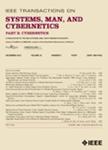版权所有:内蒙古大学图书馆 技术提供:维普资讯• 智图
内蒙古自治区呼和浩特市赛罕区大学西街235号 邮编: 010021

作者机构:Nankai Univ Coll Artificial Intelligence Tianjin 300350 Peoples R China Nankai Univ Tianjin Key Lab Intervent Brain Comp Interface & I Tianjin 300350 Peoples R China
出 版 物:《IEEE TRANSACTIONS ON CYBERNETICS》 (IEEE Trans. Cybern.)
年 卷 期:2024年第54卷第7期
页 面:4190-4203页
核心收录:
学科分类:0808[工学-电气工程] 08[工学] 0811[工学-控制科学与工程] 0812[工学-计算机科学与技术(可授工学、理学学位)]
基 金:National Natural Science Foundation of China
主 题:Containment control event-triggered mechanism modular control nonlinear heterogeneous multiagent systems unknown leaders
摘 要:This article addresses the containment control problem in multiagent systems with nonlinear heterogeneous followers and multiple unknown leaders whose dynamics are exclusively known to their neighbors. The primary goal is to ensure the convergence of each follower to the dynamic convex hull spanned by the leaders under the constraints of limited communication resources. To achieve this, this article introduces a modular event-triggered containment control scheme with three modules. The first module, Module I-signal generator, is designed for each follower to generate a reference signal asymptotically entering the dynamic convex hull without relying on follower dynamics. The second module, Module II-event-triggered mechanism, is tailored to save communication resources effectively by determining when to broadcast information based on perturbed system stability and input-to-state stability theories. The third module, Module III-tracking controller, treats each follower as an independent agent and is crafted to track the reference signal generated by Module I using an output regulation approach. It is established that the system achieves containment control without Zeno behavior under the influence of these modules, and the theoretical results are validated through simulation examples, demonstrating the practical validity of the proposed approach.